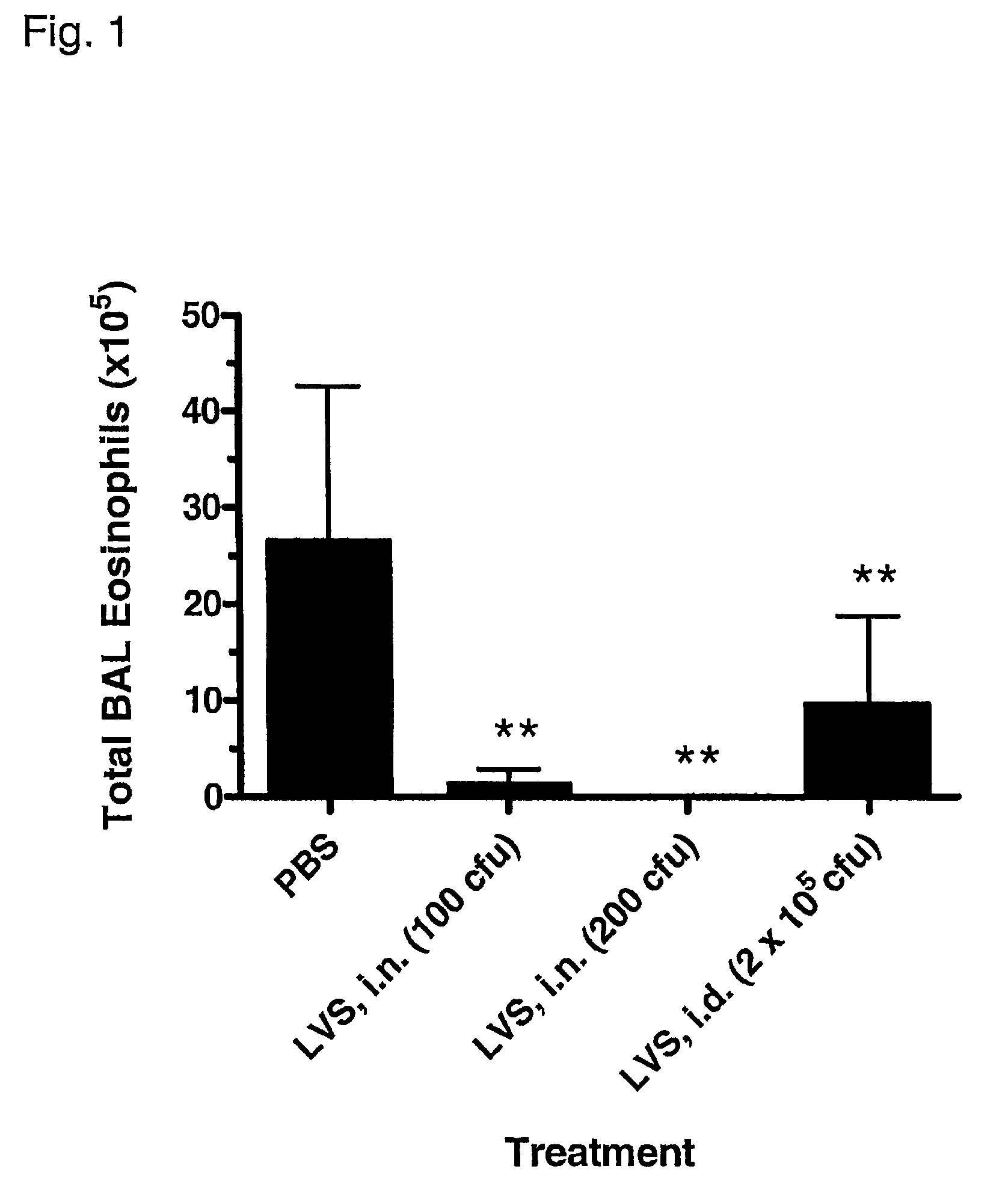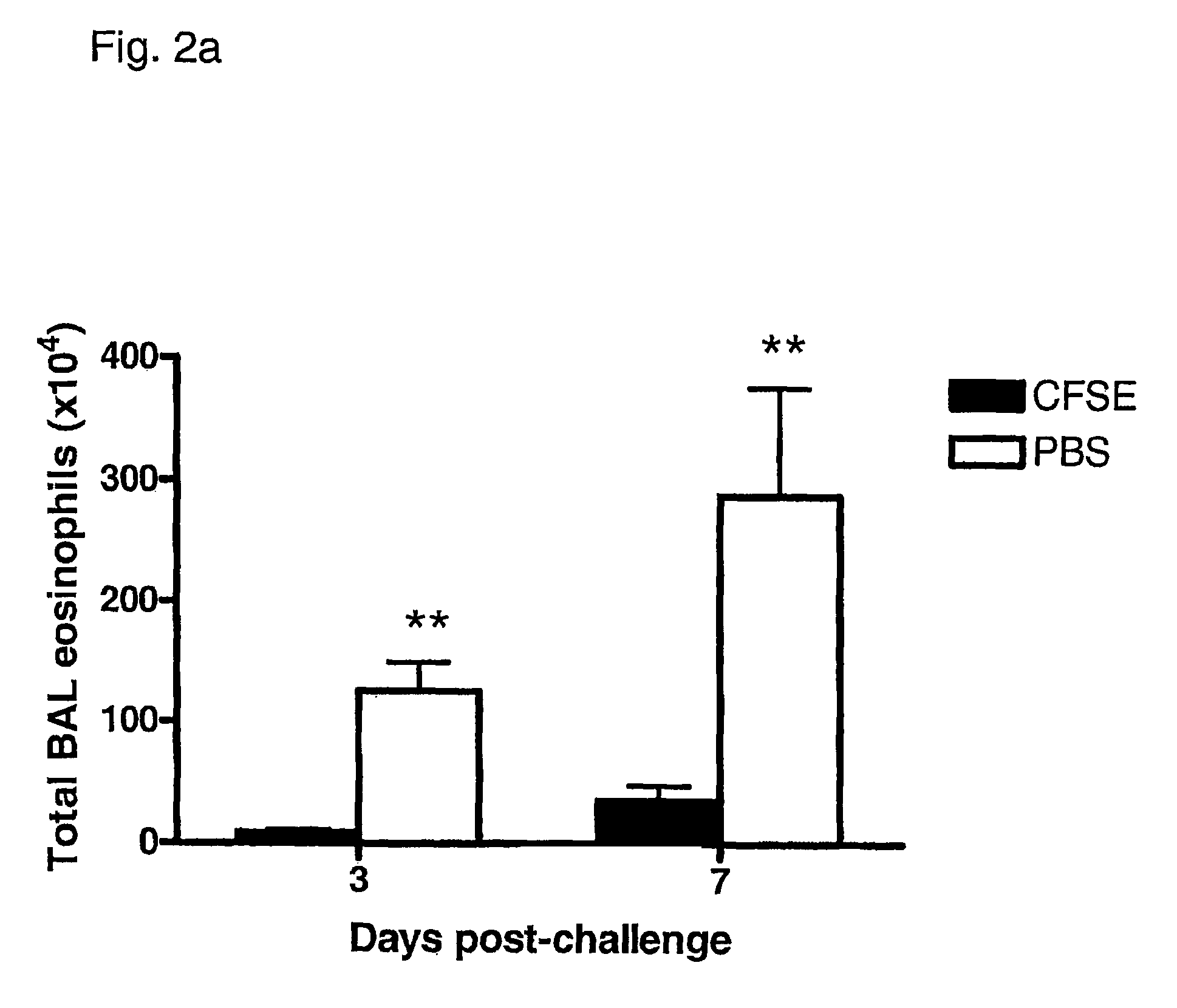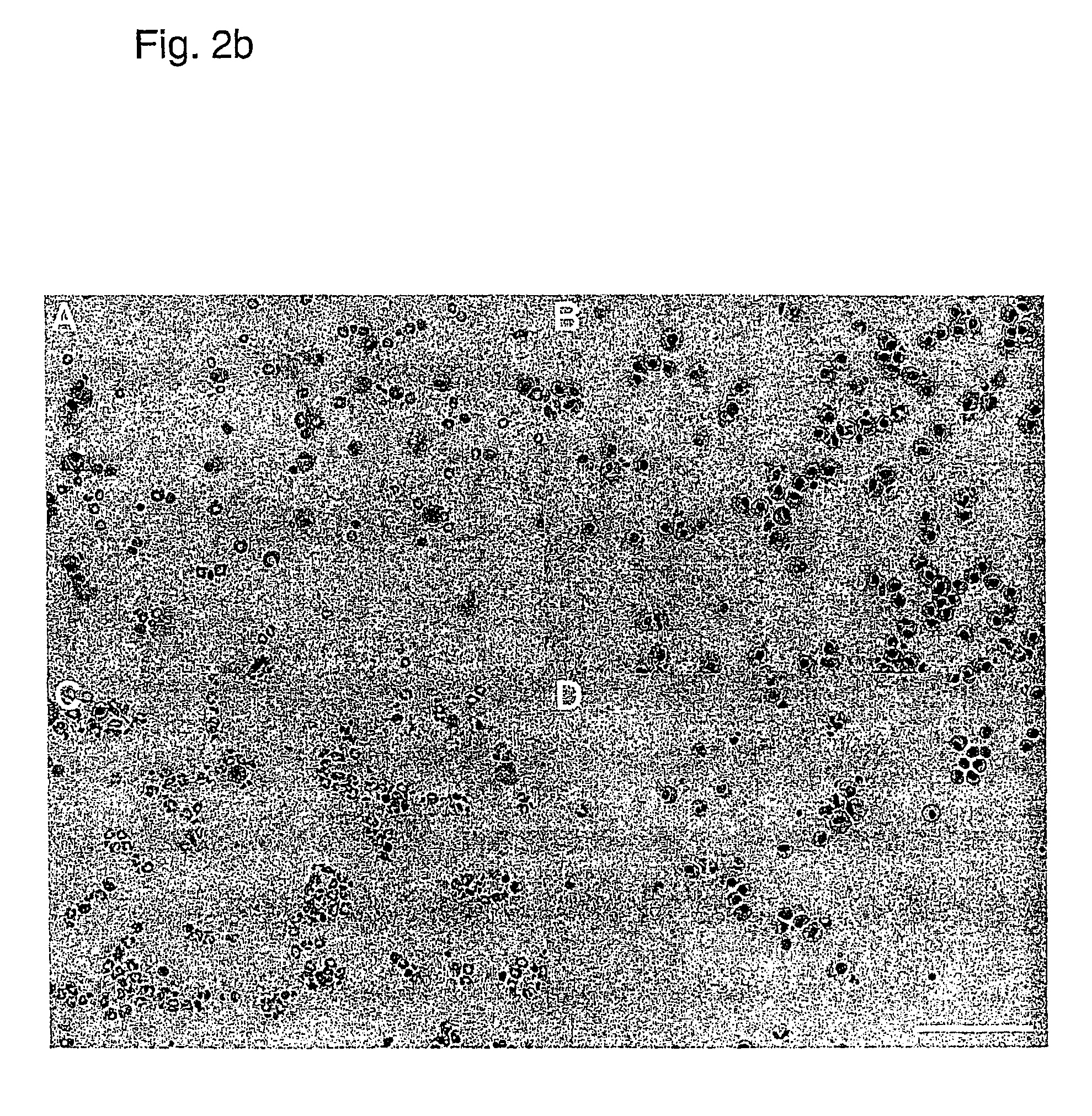Use of Francisella tularensis for prevention and treatment of allergic airway disorders
a technology of francisella and tularensis, which is applied in the field of francisella tularensis, can solve the problems of exacerbated airway hyperresponsiveness, few novel therapies and strategies with proven efficacy, and costing society billions of dollars annually. , to achieve the effect of inhibiting the infiltration of eosinophils
- Summary
- Abstract
- Description
- Claims
- Application Information
AI Technical Summary
Benefits of technology
Problems solved by technology
Method used
Image
Examples
example 1
Mice
[0047]Eight to 10 week-old specific-pathogen-free (SPF) female C57BL / 6 and Balb / c mice were purchased from Charles River Laboratories (St Constant, Quebec). Mice were housed under SPF conditions in the Animal Facility, Institute for Biological Sciences, National Research Council Canada (Ottawa) and given free access to sterile water and ovalbumin (OVA)-free diet. The animals were maintained and used in accordance with the recommendations of the Canadian Council on Animal Care Guide to the Care and Use of Experimental Animals.
example 2
F. tularensis LVS and Preparation of Cellular Components from F. tularensis LVS
[0048]F. tularensis LVS (ATCC 29684) stock culture was grown in modified Mueller-Hinton broth, harvested and aliquots of cells were frozen at −70° C. in the presence of 10% (w / v) sucrose (Conlan et al., 2003) for thawing and using as viable stock cell culture when required. The cell-free sonicate extract (CFSE) was prepared essentially in the same manner as that for Helicobacter pylori CFSE as described previously (Chen et al., 2000). Briefly, F. tularensis LVS stock culture was grown on cysteine heart agar supplemented with 1% (wt / vol) haemoglobin for 72 h at 37° C. The cells were harvested into sterile saline and disrupted by 5 minutes of sonication (30 s pulses at 60%, at 1 min intervals) on ice, using a Branson™ sonifier (model B15, Branson Sonic Power Company, Banbury, Conn., USA). The cells can alternately be disrupted using other means such as pressures extruders. Cell debris and unbroken cells wer...
example 3
Induction of Airway Eosinophilia and LVS Immunization
[0050]Mice were sensitized by i.p. injection of 2 μg OVA (Sigma Chemical, Co., St. Louis, Mo.) in 100111 of Imject Alum (Pierce Laboratories, Rockford, Ill.) on days 0 and 14 (hereafter referred to as sensitized or OVA-sensitized mice). On day 21 or thereafter, OVA-sensitized mice were intranasally challenged with 100 μg OVA in 50 μl of phosphate-buffered saline (PBS). Alternately, the OVA-sensitized mice were first treated / immunized with live LVS cells via intranasal (i.n.; 100 or 200 cfu in 50 μl of PBS) or intradermal (i.d.; 2×105 cfu in 50 μl of PBS) route, and were i.n. challenged with OVA after waiting for at least 21 more days in order to allow sufficient time for the mice to clear the LVS infection. Mice normally clear such an LVS infection by 15 days after administration (Conlan et al., 2003). In other experiments, sensitized mice were treated with heat-killed LVS (HK-LVS, equivalent to 107 cfu), 20 μg LPS from LVS, 150 μ...
PUM
| Property | Measurement | Unit |
|---|---|---|
| volume | aaaaa | aaaaa |
| thick | aaaaa | aaaaa |
| pH | aaaaa | aaaaa |
Abstract
Description
Claims
Application Information
 Login to View More
Login to View More - R&D
- Intellectual Property
- Life Sciences
- Materials
- Tech Scout
- Unparalleled Data Quality
- Higher Quality Content
- 60% Fewer Hallucinations
Browse by: Latest US Patents, China's latest patents, Technical Efficacy Thesaurus, Application Domain, Technology Topic, Popular Technical Reports.
© 2025 PatSnap. All rights reserved.Legal|Privacy policy|Modern Slavery Act Transparency Statement|Sitemap|About US| Contact US: help@patsnap.com



